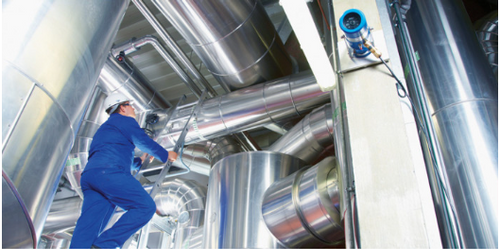How to Put a Fixed Gas Detection System in Your Facility
Flammable and toxic gas detection is a must for many oil refineries, offshore platforms, laboratories, chemical production plants, and public works facilities. If your work requires constant gas monitoring, you need a reliable, easy-to-maintain fixed gas sensor system that will warn you quickly if a problem arises.
How complicated a fixed gas system depends largely on the use of the data provided by the sensors. For example, if a fixed gas detection system is used only for warning nearby workers, then the outputs from the detection system can be very simple. However, if gas level data is needed to properly administer the site, data storage may be needed, and a more advanced system will be used.
Typically several fixed gas sensors are placed in the areas where leaks are most likely to occur. These are generally connected electrically to a multi-channel controller located some distance away in a safe location, though some locations will use sensors directly connected to the controller.
When choosing a fixed gas system, it's important to know how the information will be used so the correct components can be purchased. While some systems employ remote pumps to pull the air from a specific location, others are diffusion sensors that test the surrounding air and can either be read at the source, like the RKI M2 series of stand-alone fixed gas monitors which also relays that information to a remote controller, or a less sophisticated system where the remote sensor relays the information which is only read at the controller like the RKI S2 sensors.
Regardless of the type of flammable or toxic gas produced in your facility, there are fixed gas sensor options to deal with it. When putting together multi-point systems the components must be compatible. Some systems will transmit carrying not only the output signal but also power to the electrical bridge circuit, which is located at the sensor to reduce signal voltage drop along the cables.
A qualified electrician needs to install these systems. It's also worth noting in the beginning whether significant disruption to production will be incurred if the system needs to be offline for calibration and maintenance of the gas detection sensors. Some sensor/transmitters, like the M2 series , can use a magnetic tool for adjustment that does not require opening the unit for zeroing and calibration, and therefore doesn't require the immediate area to be declassified when performing these tasks.
To find out more about fixed gas sensor systems, give us a call at 1-800-829-9580 Monday through Friday 6 am - 5 pm.
Thanks for reading.
Recent Posts
-
Promoting Safety: National Work Zone Awareness Week is April 15-19, 2024
Each year, the National Work Zone Awareness Week (NWZAW) places the spotlight on the importance o …Apr 11th 2024 -
Understanding 4 Gas Monitors: How They Work & Why They Are Important
In today’s increasingly dynamic industrial landscape, 4 gas monitors have emerged as critical com …Apr 8th 2024 -
April Showers Require Workers to Wear Hi-Vis Safety Rain Gear
While April showers bring May flowers, they also bring challenges, particularly for those working …Apr 1st 2024





